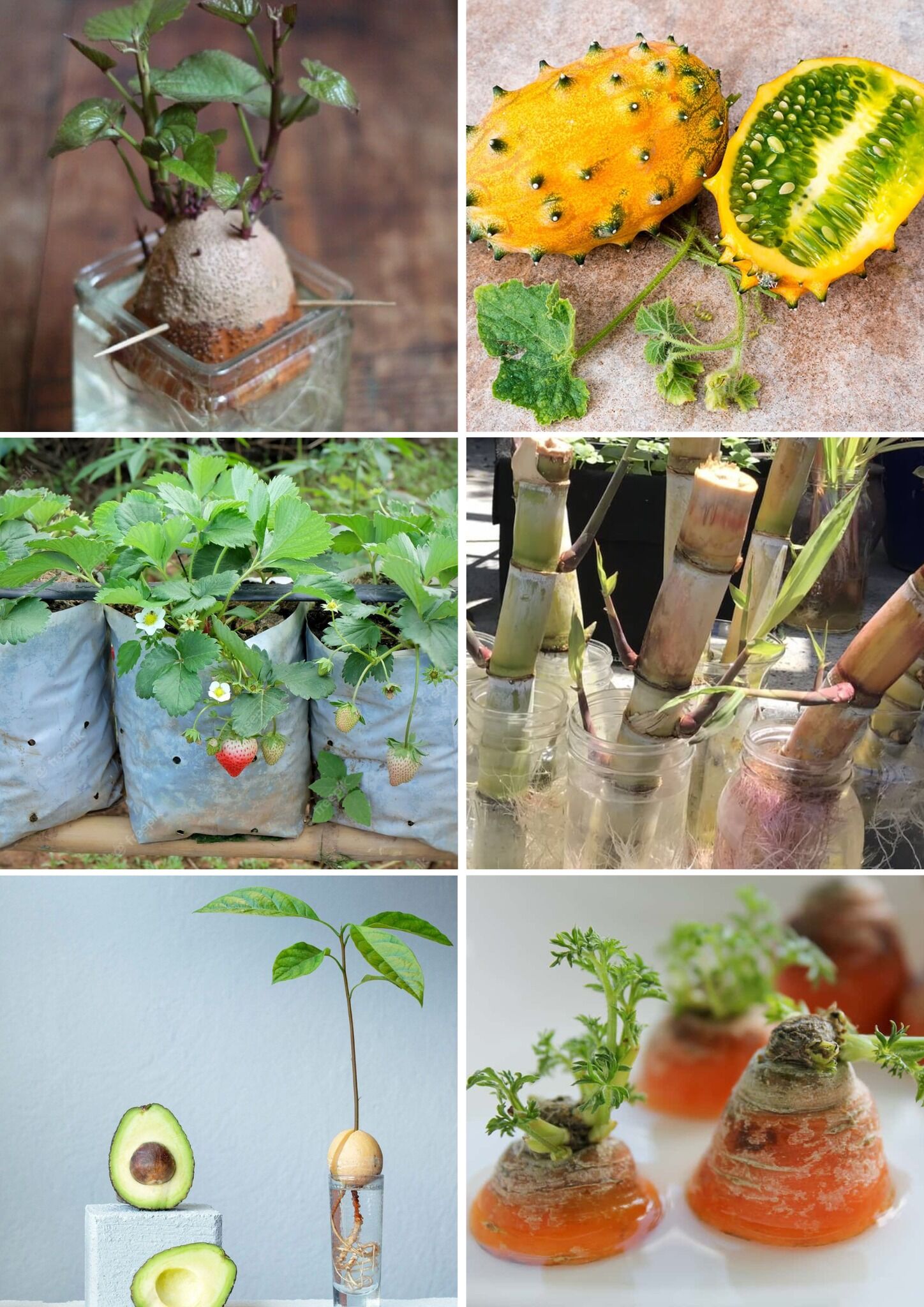6 plants How to Propagate and Growing quickly🌱

I am often asked why we bother growing sugar cane, especially when refined sugar is so inexpensive in the super markets. The easiest answer is because we enjoy growing it. Sugar Cane is easy to propagate and grow and it can act as a great privacy screen. It can be grown for chewing or juicing. The juice can be enjoyed fresh or boiled to turn to syrup. And it can be fed to your cows and goats as a great fodder. It’s so much more than just a natural sweetener and I’ll show you how we propagate and grow sugar cane on our little homestead.
Traditionally, the cut canes would be placed horizontally in a trench and back filled as the new stocks and roots developed. This is a great way to grow long dense rows of sugar cane. We prefer to grow small clusters of cane in alternating rows which allows us to squeeze through the rows while still providing a privacy screen.

To start growing your sugar cane, you‘ll need to source some sugar cane stocks. You can look in classified ads, online, ask a local farmer, or I’ve even seen canes in local supermarkets. Make sure the canes you purchase have knuckles on them as this is where the roots and new canes will form. We were lucky enough to have a neighbor trade us some sugar cane for a bit of squash and okra from our garden.

The best time to look for canes will be in the late fall. Most people in our area of central Florida harvest their sugar cane in November and December. These are also the months you’ll want to put your cane in the ground for next seasons harvest.

As I mentioned previously we plant our sugar cane in clusters. To do this we cut the canes into smaller pieces with each piece containing two to three knuckles. The site you select for your cane needs to be in full sun. While sugar cane will grow in part shade the canes won’t be thick enough to juice or chew. It would essentially be a tall decorative grass. So make sure you give them lots of sunshine.

This next step is where we do things a little different. Rather than laying the canes horizontally, we like to stick the canes in their holes vertically. We use post hole diggers to dig a small hole deep enough for the knuckles to be buried but the top of the cane pokes up a bit. Having the cane poke up out of the ground will help you to identify the new canes in the spring when they begin to emerge from the soil. (I’ve mowed over my fair share of canes thinking it was grass prior to planting this way.)

When you place your cane in the hole, make sure to have the node where the new cane will emerge pointing up toward the surface of the ground. This way you ensure the canes grow up and out of the soil and the roots anchor downward.

In the past when we planted the canes horizontally we would lose several new clusters in spring freezes leaving large gaps in our privacy screen. Planting the canes upright in the ground helped us to avoid loosing patches of cane due to frosts and freezes. The first shoot of cane growing from the first knuckle might be lost due to an unexpected freeze but the lower cane on the knuckle below would still be submerged in soil and protected, allowing the cluster to still produce canes after any previous losses.

Once we have the cane all planted we just leave them to emerge in their own time. Generally we don’t water our sugar cane once its established but we do recommend watering newly planted caned about twice a week in the spring as new shoots emerge. We stop watering when summer hits here which is our rainy season. If you have dryer summers you may need to water more often.

We fertilize with a balanced fertilizer such as 10-10-10 three times per year, in March, June, and September. We have used an orchard mix or blueberry mix in the past and the sugar cane doesn’t seem to be too particular about what fertilizer it receives. Sugar cane is a grass however, and needs to have a decent amount of nitrogen. And if your soil generally lacks in organic matter (like our lovely sandy lot) a fertilizer with trace minerals included will give it the extra boost it’ll need.
Come fall or winter, you’ll be able to harvest your own sugar cane. If you want to see how we harvest and process our sugar cane, check out my article:
